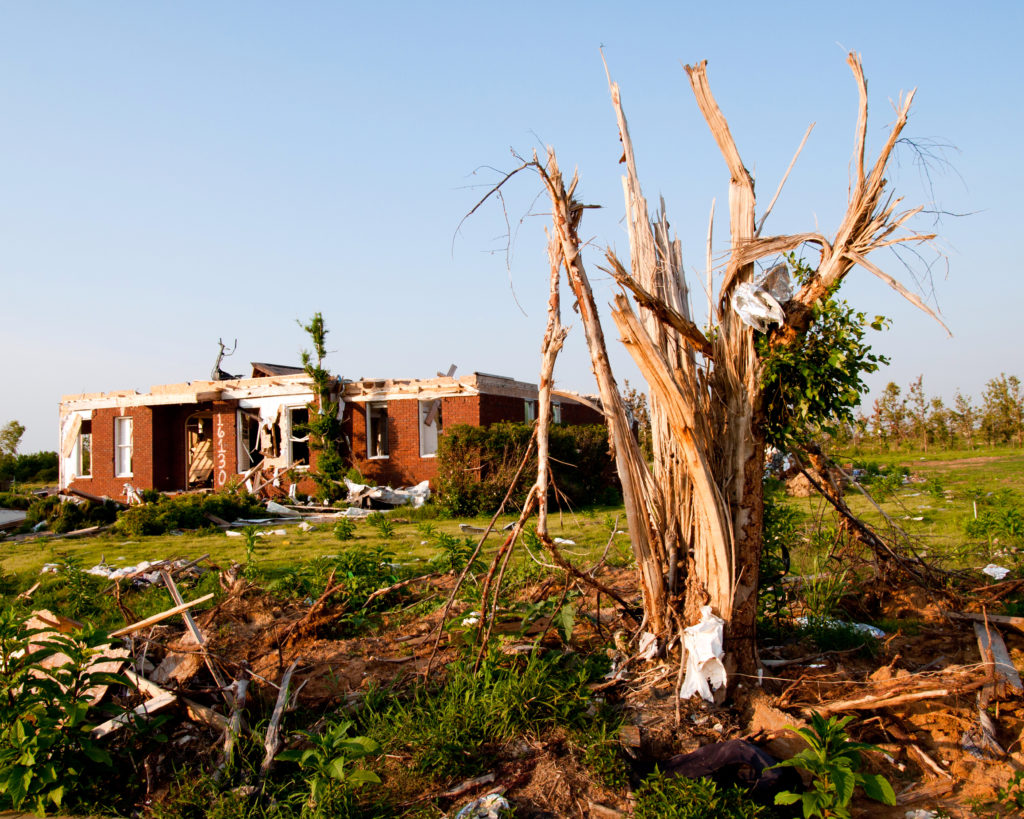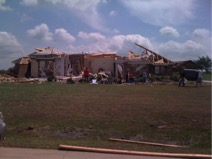By Jeffrey Widmer, Chief Building Official, City of Rockwall, and BOAT Board of Directors
Many of you may already be aware of BOAT’s response to several disaster events that occurred within the state and the assistance we provided to communities impacted by those events. On occasion, the Association has called for volunteers to perform damage assessment inspections within the affected communities. The destructive tornado that swept through Ellis County, Garland, and Rowlett in December 2015 and also the incredible hailstorm that hit Wylie in April 2016 were two of those events. Many of you responded by giving your time and efforts and/or indicating your willingness to participate in the future, and on behalf of the BOAT Board of Directors, I want to say thank you. I believe we have learned valuable lessons that will help us be more prepared in the future.
Following a disaster, first responders go into an area to perform their search and rescue efforts, to assist the injured, and to secure the area. The next crucial step is to perform an evaluation of all affected structures and to identify if they are in a safe or unsafe condition. The main objective of conducting these inspections is to get as many people back into their homes and businesses as soon as possible. Trained building inspectors are very qualified to perform that task.
The possibility of a disastrous event occurring in one of the city’s we work for is always present, and having the proper tools and materials readily available can help us mobilize faster. Therefore, I would like to focus this article on one step each of us should consider taking to prepare ourselves to respond if an event strikes us. I encourage everyone to assemble to-go packs of the materials needed to conduct post-disaster inspections.
There are some basic items necessary to perform this task, and good reasons to assemble them ahead of time. We never know where an event might strike or the extent of damage the event may cause. There will be instances when electric service is disrupted making it impossible to make copies of necessary forms. Also, if city facilities are damaged and possibly unsafe to occupy, it will be beneficial to have some of the needed materials stored elsewhere in your city. Rockwall chose to store our materials in a very sound water tower. If the need arises, we have them stored for quick retrieval. You could also consider storing your packs in two separate locations in case one of the locations becomes inaccessible during an event. Our to-go packs include the following items:
| Post Disaster Inspection Box Inventory | ||
| Description | Quantity | |
| ATC-45 Rapid Evaluation Safety Assessment Form | 1500 | |
| ATC-45 Detailed Evaluation Safety Assessment Form | 100 | |
| ATC 20-2 Green “Inspected” Placard | 500 | |
| ATC 20-2 Yellow “Restricted Use” Placard | 500 | |
| ATC 20-2 Red “Unsafe” Placard | 500 | |
| Top Loading Plastic Sheet Protectors for placards | 1000 | |
| Clip Board | 10 | |
| Emergency Personnel Sign In Sheet | 10 | |
| Temporary Name Tag | 20 | |
| Plastic Name Tag Holder with Clip | 20 | |
| Heavy Duty Staple Gun | 10 | |
| Staples (boxes) | 10 | |
| Gorilla tape (1 roll) | 10 | |
| Box of pens to complete the forms | 10 | |
| Sharpie markers to complete the placards | 10 | |
| Thumb drive containing all forms and placards | 1 | |
While all of the listed items may prove to be essential, you will need to decide on the quantities to assemble. After participating with the assessments performed in Rowlett, it was my goal to equip Rockwall with enough materials to supply 10 teams for a minimum of two full days in the field. A good point of reference to keep in mind is that each team should be able to perform rapid assessments on approximately 60 structures per day. This number is relevant to be able to estimate the number of days needed to complete all of the necessary assessments. This will also help those leading the assessment efforts to manage the recruiting of team members for the cause.
Teams should conduct their efforts with the knowledge provided in the Applied Technology Council’s ATC 20, 20-2 procedure books as well as their associated field manuals ATC 45 and ATC 20-1. Another important guide is the When Disaster Strikes workbook published by ICC. I encourage each of you to take some time to review those resources because they will definitely help prepare you for any future response efforts.
There are other tools that would be beneficial for team members conducting these inspections. That list includes hard hats, safety glasses, safety vests, sun screen, bug spray, and any other protective gear an individual may want to have while working at the disaster site. I would also suggest appropriate foot wear–not necessarily steel toes, but something with a thick sole and good traction. Individuals responding may bring those items when they arrive at the scene, but you could elect to include some of them in your to-go boxes as well.
As building code officials, the training we have received and the skill sets we have developed put us in a prime position to respond to an event that may occur in our municipalities or perhaps somewhere else in our great state. Anything we can do to be more prepared in advance will help us to better serve the public.



